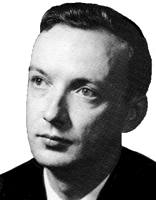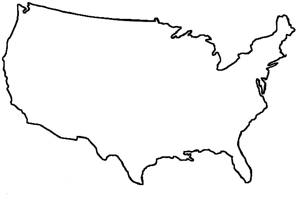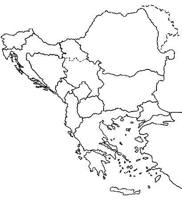
|
The Society of Folk Dance Historians (SFDH)
A Century of Kolo Dancing in America
Home |
About |
Encyclopedia | CLICK AN IMAGE TO ENLARGE |

|
1. PRE-WORLD WAR I
- Immigrants came from the southern part of the then-Austro-Hungarian Empire: Croatians and Serbians, along with Czechs, Slovaks, Hungarians, and others.
- Croatians and Serbians brought their dances: kolo, drmeš, polka, waltz, čardaš, and their instruments: the tamburitza (tambura, tamburica).
- In America, opportunities for dancing were few, often no more than five or six times a year. Those were hardworking times; leisure was rare.
- The "classic" kolos, brought directly from the Old Country by these earliest immigrants, included:
Djurdjevka
Drmeš (about four different ones)
Erdeljanka
Haj, haj, Bože daj (Devojačko kolo)
Jeftanovićevo kolo
Kokonješte
Logovac ("Svatovac")
Malo kolo
Natalijino kolo
Radikalka
Sarajevka
Seljančica
Srbijanka
Srpkinja
Veliko kolo
Zaplet
Žikino kolo
 1. BETWEEN WORLD WAR I AND THE LATE 1930s
1. BETWEEN WORLD WAR I AND THE LATE 1930s
- A general decline in popularity of kolo dancing in the immigrant communities in favor of United States jazz dances, fox trot, and swing. Old-timers often say, "Kolos practically died out – except for Seljančica!"
- This was slightly less the case in Serbian communities, which were more closely knit and where the old kolos proved more hardy.
- Despite the decline, a few new kolos were introduced during this time in different communities.
Čarlama
Čuješ mala
Kozačko kolo
Milica
Nebesko kolo
Pljeskavac
Šušu Mile
3. LATE 1930s AND WORLD WAR II
- The late 1930s saw the burgeoning of a revival of kolo dancing, particularly in certain Croatian-American communities in the Chicago and Pittsburgh areas.
- For the first time in the United States, kolos began to be taught in classes rather than being "picked up" from childhood by trial and error at dance events in church halls, clubs, and picnics.
- An important United States recreational movement, someties called "International folk Dancing" (IFD), had been developing nationwide at this time. More and more Americans were choosing, as a favorite recreation or hobby, the learning and practicing of folk dances of other countries.
- In the late 1930s, IFD leaders began to take an interest in the kolo. Two nationally known IFD leaders, Vyts Beliajus in Chicago and Micheal Herman in New York, visited these communities, learned kolos, and in turn taught them to the American folk dancers.
4. 1945-1950
- In the aftermath of World War II, the revival that had begun in the ethnic communities in the late 1930s switched into high gear.
- The youth formed "Kolo Klubs," kolo contests were inaugurated, "Kolo Kings" and "Kolo Queens" were crowned.
- New leaders arose in the various communities, searching for old, forgotten kolos among the original immigrants (few of whom were dancing any more) to pass on to the new generation.
- As the stock of old kolos dwindled, leaders began to look for other sources of dances. "Kolos," such as the following, appeared at Croatian and Serbian dance events:
- Influx, from European refugee camps, of the "displaced persons" ("DPs"), originally from the former Yugoslavia. Different cultural backgrounds from earlier immigrants. The DPs contributed two new kolos to the American repertory:
Misirlou (from Greek Kritikos)
Makedonka (from Greek 'Samiotissa', a Kalamatiano)
Židsko kolo (from Israeli Im Hoopalnu)
Moravac
Čačak
- In California, Ivan ("Kolo John") Filcich, himself of the earlier immigrant community, took interest in promoting kolos in the broader folk dance world. He founded the annual San Francisco Kolo Festival at this time.
- In New York, Michael Herman also initiated an annual kolo event at his Folk Dance House, featuring the Banat Tamburitza Orchestra. Both festivals took place over Thanksgiving weekend. The San Francisco festival is still being held.
5. 1951-PRESENT
- Kolo dancing's development in America during the past fifty-some years in Croatian and Serbian communities has been driven by two major trends: (1) reconnection to the Old Country and (2) evolution of the "Junior Tamburitzan" groups.
- The Duquesne University Tamburitzans played key roles in launching both these trends. From the "Tammies" tours of the former Yugoslavia in 1951 and 1952, they brought back many kolos hitherto unknown in the United States. These were:
Hopšajdiri
Kriči kriči tiček
Kolo žita
Kolo kalendara
Bunjevačko momačko kolo
Ersko kolo
Bela Rada
and too many others to list here!
- Then-director Walter Kolar's initiative to train the young to play the tamburitza was launched in the 1950s and the Junior Groups have since been sponsored and supported by fraternal and other organizations. These community groups foster the preservation of tamburitza music and associated dance as a performance genre.
- Other forms of the reconnection to the Old Country have been United States tours by the national folk ensembles of the respective countries as well as teaching tours by their former members.
A synopsis of a lecture presented by Dick Crum at The Tamburitza Association of America's 2005 Tamburitza Extravaganza on September 16, 2005.
DOCUMENTS
- Dick Crum, an article.
- Sing and Dance the Kolo, a book.
- Yugoslavia, a former country.
This page © 2018 by Ron Houston.
Please do not copy any part of this page without including this copyright notice.
Please do not copy small portions out of context.
Please do not copy large portions without permission from Ron Houston.
